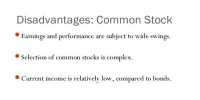The debt ceiling is the maximum amount of money that the United States can take by issuing bonds. Once the ceiling is reached, the US Treasury Department can no longer issue treasury bills, bonds, or notes. It can only pay bills because it earns tax revenue. The debt ceiling is an overall picture that applies to gross debt, including debt in the hands of the public and in intergovernmental accounts. About 0.5% of debt is not covered by the ceiling. These include government funds, such as the Social Security Trust Fund, and various government retirement funds (as well as many more). These funds buy U.S. debt, which means they are financing the rest of the government. In reality, this can only prevent the Treasury from paying for expenses and other financial obligations after the limitation limit, but which has already been approved (in the budget) and allocated.
Before the Debt ceiling was created, the President ruled freely with the country’s finances. Congress began debt-restriction voting in 1917 by the Second Independence Bond Act, which helped finance the country’s entry into World War I. In 1999, it consolidated bonds and other debts under a 45 billion seal. When the debt limit is actually reached without increasing the law enforcement limit, the Treasury will have to take “extraordinary measures” to temporarily spend money on government spending and liability until an agreement is reached. By hitting the limit and failing to pay interest to bondholders, the United States by default lowers its rating and increases it’s spending. Congress is responsible for both its spending and debt limits. It already knows how much it will add to the budget if it approves a budget deficit each year. If this situation occurs, it is not clear whether the Treasury will be able to prioritize repayment over debt to avoid a defaulter on its bond obligations, but it must default on at least some of its non-bond repayment obligations. In 2011, Republicans in Congress demanded that the deficit be reduced to allow for an increase in the debt ceiling. At this point, the US Treasury debt snatched its Triple-A rating by Standard & Poor’s – a rating it had held for more than 70 years.
Debt management of the U.S. public is an important part of the macroeconomics of the U.S. economy and financial system, and the ceiling is a barrier to the executive’s ability to manage the U.S. economy. It also includes debt from the Federal Financing Bank. The statutory clock limit is slightly lower than the total U.S. debt recorded by the national debt clock. There is debate over how the US economy should be managed and whether the debt ceiling should be a suitable measure to control government spending.
















